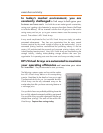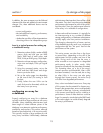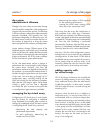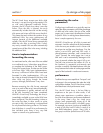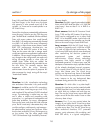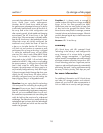
section 1
the system
administrator’s dilemma
Change is the issue. Many environments change
over time and this makes their initial configurations
progressively less and less optimal. The dilemma
is that an optimum configuration today eventually
becomes out-of-date, and typically over time,
performance degrades in traditional arrays, but
the administrator usually has neither the time nor
the window of opportunity to bring the system
down and perform the necessary reconfiguration.
Access patterns change. Different areas of the
database become more highly used. Sometimes
at the end of the month certain data that normally
lies unused now becomes highly used and requires
higher performance. All of this poses problems
for the conscientious system administrator.
At first, the administrator notices a change in
performance, but it is not enough to justify bringing
the system down. However, over time, the
performance continues to degrade until eventually
the problem is so severe that the administrator is
forced to bring the system down over the protests
of the users. He must then go through all 13
configuration steps, including binding all the
LUNs and waiting for the reformat to complete.
After that the cycle begins again: Performance
initially is great, but over time it degrades
until finally the pain increases to the point that
a reconfiguration again becomes justifiable.
managing the hp virtual array
Configuring an HP Virtual Array is much simpler
than the process for configuring a traditional
array. Remember the complex steps involved in
configuring a traditional array? The steps involved
in configuring the HP Virtual Array consist of:
• determining the total capacity and
performance requirements
• for each application, determining the
number and size of LUNs
for the necessary performance
1
Step away from the array; the configuration is
now complete. Every other step is automatic.
RAID levels are automatic. The different capacity,
number, and speeds of disk drives are automatically
accounted for. The cache page size is automatically
set. Even the disk formatting is performed
automatically. Moreover, after the LUNs are set,
the array is immediately available to accept data.
The array does the work, not the administrator.
Not only is this the initial configuration process,
but the process is just as simple for any subsequent
reconfigurations. In other words, if LUNs have to
be deleted and new ones created, the process is
just as simple. Note: As with any array, if you
wanted to delete the LUNs but save the data,
you would have to do a backup and restore.
adding capacity with
hp virtual arrays
HP’s Virtual Array Architecture also simplifies the
process of adding capacity to an array. Today,
many traditional arrays allow the administrator
to add disks on-the-fly—in other words, to add a
disk drive when the array is up and running and
accepting I/Os.
However, when the disk drive is added to a
traditional array, it is not part of any LUN. It is
not formatted, and it is not able to accept data.
An administrator must go in and manually perform
those functions. If the disk drive is to be added
to an already existing RAID group, then the data
in that group must first be backed-up and later
restored to the newly created LUN that now
contains the new disk drive. And except for the
backup, the steps are the same as when an
array is first configured.
1.4
hp storage white paper
• determining the number of disks required
• creating the LUNs—note: creating LUNs
takes only a few seconds per LUN



